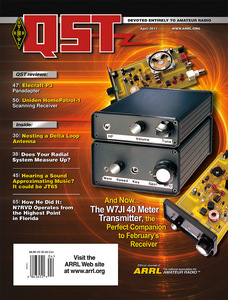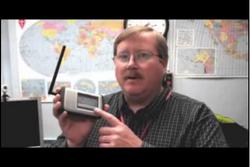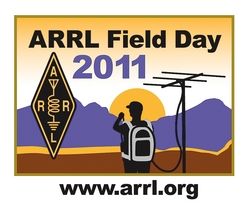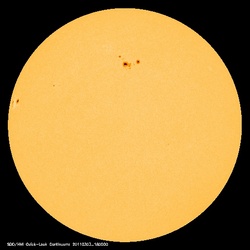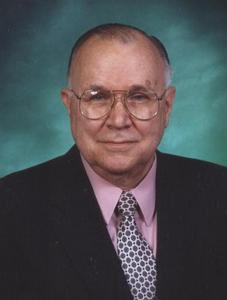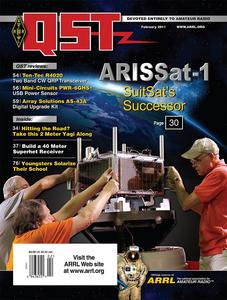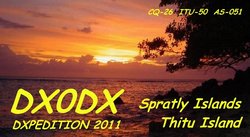 March 3, 2011 John E. Ross, KD8IDJ, Editor
| |||||||||||
+ Legislative News: ARRL Members Respond to HR 607
Last month, a bill was introduced in the US House of Representatives that addresses certain spectrum management issues, including the creation and maintenance of a nationwide Public Safety broadband network. This bill -- HR 607, known as The Broadband for First Responders Act of 2011 -- if passed, also calls to auction off parts of the 70 cm band, namely 420-440 and 450-470 MHz. As such, the ARRL asked its members to write their Representative, asking them to not support HR 607 in its current form. According to ARRL Regulatory Information Manager Dan Henderson, N1ND, Chwat & Co -- the ARRL's legislative relations firm in Washington, DC -- received almost 1000 letters from League members in opposition to HR 607. "This is a great start and many thanks to the diligent members who have risen to the challenge; however, it cannot stop there. As long as HR 607 is in its current form, we must continue this campaign." He clarified that the ARRL opposes HR 607 in its present form: "We do not oppose the concept of dedicated spectrum for the development of a Public Safety infrastructure and wireless network. We object to the bill because of the inclusion of 420-440 MHz as part of the spectrum to be swapped and auctioned to commercial users." Click here for some pointers for writing letters in opposition to HR 607. + Get Ready for the April Issue of QST! No foolin' -- the April issue of QST is jam-packed with all sorts of things that today's Amateur Radio operator needs. From product reviews to experiments to contesting -- including articles featuring a homebrew 40 meter transmitter, ground radials, digital modes and the 2011 ARRL Board of Directors Annual Meeting -- this issue of QST has something for just about everyone.
Who says life's too short for QRP? Not Lou Burke, W7JI. Following up on his February 2011 QST article about a homebrew QRP superhet receiver, Burke brings us "The W7JI Low or Lower Power 40 Meter Transmitter," a companion to that receiver. This transmitter features a VFO, CW keyer and automatic antenna switching. Ron Harger, WD8BCS, shows readers an inexpensive and easy-to-build radial system for temporary vertical antenna installations in his article "Does Your Ground Radial Kit Measure Up?" When you keep your audio controls in check, it really does make a difference in how your station sounds. QST Technical Editor Joel Hallas, W1ZR, demonstrates how to set up your SSB transceiver with the proper audio levels in "Sounding Good on the Air -- Setting Your Audio Controls." Amateur Radio is all about experimentation. One of the newer ways for hams to have fun and play around on the bands is via the digital modes. QST editor Steve Ford, WB8IMY, takes a look at one of the newer digital modes in "JT65 -- The 'Musical' Mode." In January, the ARRL Board of Director met in Connecticut for its Annual Meeting. Join ARRL News Editor S. Khrystyne Keane, K1SFA, and QST Managing Editor Joel Kleinman, N1BKE, as they take you inside the meeting room as the Board charts the course for the coming year and beyond. Keane also tells of the recipients of the ARRL International Humanitarian Award, the George Hart Distinguished Service Award and the print, video and audio winners of the Bill Leonard, W2SKE, Professional Media Award.
QST Technical Editor Joel Hallas, W1ZR, takes a look at the Elecraft P3 panadapter in this month's Product Review. He says this add-on to Elecraft's popular K3 rig "adds high performance, stand-alone functionality. If you want to see what's happening on the band, this will provide the needed view, as well as another way to control radio tuning, if you wish." ARRL Contributing Author Curt Phillips, W4CP, checks out the Uniden HomePatrol-1 scanning receiver. He says that it "brings user friendliness to a new level. It performs complicated scanning functions with ease, and loading local frequencies is a snap." Carl Luetzelschwab, K9LA, delivers the results of the 2010 IARU HF World Championship, held this past July. What makes this 24 hour contest so much fun? "Everyone works everyone, we get to operate both CW and phone, the exchange is simple and we get to work HQ stations and receive their nifty QSLs," said one participant. "It's also during the summer break, which allows busy college students to take it seriously." ARRL Regulatory Information Manager Dan Henderson, N1ND, tells about the 2011 ARRL Straight Key Night. As one participant described it, Straight Key Night participants appreciate "the opportunity it affords us Old Timers to relive the past in such a wonderful way." Of course, there are the usual columns you know and expect in the April QST: Happenings, Hints & Kinks, The Doctor Is IN, How's DX, Vintage Radio and more. Look for your April issue in your mailbox. QST is the official journal of ARRL, the national association for Amateur Radio. QST is just one of the many benefits of ARRL membership. To join or renew your ARRL membership, please see the ARRL Web page. The Doctor Is IN : Measuring a Meter's Tolerance David Van Doorn, W9WEL, of Fort Wayne, Indiana, wrote to the ARRL's Doctor, asking about his analog meter's tolerance. He wanted to know if the tolerance is listed as 10% of full scale, does that actually mean ±10% of full scale? For example, a meter with a 300 unit full scale would have a specified accuracy of the measured value of ±30. Thus, a reading of 40 could actually be anywhere from 10 to 70. Or does that mean ±10% at full scale? For example, at 300 full scale, an actual value of 300 could read 270 or 330 and every other reading on that scale would read ±10%? So an actual value of 40 could read 36 or 44? Here's what the Doctor had to say: I'm afraid it is the former. This suggests that the scale selected be one with the reading near the top of the range for maximum accuracy. Keep in mind that the actual accuracy could be -- and often will be -- much better than that specified, just not worse. Thanks Doctor! Do you have a question or a problem? Send your questions via e-mail or to The Doctor, ARRL, 225 Main St, Newington, CT 06111 (no phone calls, please). Look for "The Doctor Is IN" every month in QST, the official journal of the ARRL. + Public Service: No HF Frequencies Being Used in New Zealand Earthquake Operations
The ARRL has received word from the New Zealand Association of Radio Transmitters (NZART) -- that country's IARU Member-Society -- that amateurs there providing communications support in the aftermath of the 6.3 earthquake are using 2 meters (144 MHz). No HF frequencies are being used. If this changes, the information will be posted on the ARRL website. + ARRL in Action : What Have We Been Up to Lately? Compiled by ARRL News Editor S. Khrystyne Keane, K1SFA
This feature is a concise monthly update of some of the things ARRL is doing on behalf of its members. This installment -- which covers the month of February -- looks at how the ARRL is responding to HR 607, a new Memorandum of Understanding between the ARRL and the Boy Scouts of America, improvements at W1AW and in the ARRL Lab, reports from the Official Observer Desk and more . Read more here. ARRL Field Day: 2011 Field Day Packets Available
It's that time of year again -- time to start gearing up for ARRL Field Day, June 25-26, 2011! ARRL's flagship operating event -- always held the fourth full weekend in June -- brings together new and experienced hams for 24 hours of operating fun. Field Day packets are now available for download and include the complete rules (including a change for 2011), as well as other reference items such as forms, ARRL Section abbreviation list, entry submission instructions, a Frequently Asked Questions section, guidelines for getting bonus points, instructions for GOTA stations and a kit to publicize your event with the local press. Read more here. Solar Update
Tad "Waiting for the Sun" Cook, K7RA, reports: Solar activity is on the rise again, but the average sunspot and solar flux numbers are down, compared with last week. This week, the average daily sunspot number declined more than 14 points to 50.9, and the average daily solar flux was off 7 points to 96.8. The average daily planetary A index rose from 6.1 to 9, and the average mid-latitude A index was about the same, declining from 5.4 to 5.1. The most active day for geomagnetic indexes was March 1, with a planetary A index of 31. The planetary K index rose as high as 6 on that day. NOAA and USAF predict solar flux at 115 on March 3, 120 on March 4-10, 110 on March 11-15 and 105 on March 16-17. The planetary A index is forecast at 15, 12 and 10 on March 3-5, 5 on March 6-13 and 7 on March 14-15. The monthly average of sunspot numbers for December through February was 22, 32.2 and 53.5. Look for more information -- including a take on why Solar Cycle 24 has been so weak -- on the ARRL website on Friday, March 4. For more information concerning radio propagation, visit the ARRL Technical Information Service Propagation page. This week's "Tad Cookism" is brought to you by The Doors' Waiting for the Sun. + Silent Key: Eugene Pressler, W3ZXV (SK)
Eugene "Gene" Pressler, W3ZXV, of Gwynedd, Pennsylvania, passed away February 22. He was 80. Pressler, who served as an Assistant Director in the ARRL Atlantic Division, also served as the Public Information Coordinator and Assistant Section Manager for Eastern Pennsylvania, as well as the Division's representative on the Public Relations Advisory Committee for several years. In 1996, Pressler was honored by the Atlantic Division as its Amateur of the Year for a "lifetime of service to Amateur Radio." He co-founded and served as Director Emeritus of the Area Repeater Coordination Council, the regional Amateur Radio repeater frequency coordinator for Eastern Pennsylvania and Southern New Jersey. Read more here. + ARRL Recognizes: Lou Burke, W7JI, Wins February QST Cover Plaque Award
The winner of the QST Cover Plaque Award for February is Lou Burke, W7JI , for his article "A Compact 40 Meter Receiver. " Congratulations Lou! The QST Cover Plaque award -- given to the author or authors of the best article in each issue -- is determined by a vote of ARRL members on the QST Cover Plaque Poll Web page . Cast a ballot for your favorite article in the March issue today. DX News: Spratly Islands DXpedition Postponed to 2012
In the March 3 edition of The Daily DX, Editor Bernie McClenny, W3UR, reports that the planned DXpedition to the Spratly Islands has been postponed until April 2012. According to DX0DX Team Leader Chris Dimitrijevic, VK3FY, the postponement is due to circumstances beyond the control of the DX0DX Team and "in the best interests of the Team of Operators." The DX0DX DXpedition was originally scheduled to run January 6-February 1, 2011. Spratly currently sits at #32 on DX Magazine's "Most Wanted" List. This Week on the Radio This week:
Next week:
All dates, unless otherwise stated, are UTC. See the ARRL Contest Branch page, the ARRL Contest Update and the WA7BNM Contest Calendar for more info. Looking for a Special Event station? Be sure to check out the ARRL Special Event Stations Web page. Upcoming ARRL Section, State and Division Conventions and Events
To find a convention or hamfest near you, click here. ARRL -- Your One-Stop Resource for Amateur Radio News and Information
Click here to advertise in this newsletter. | |||||||||||

